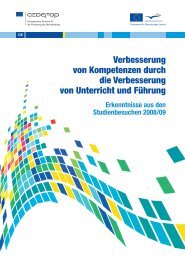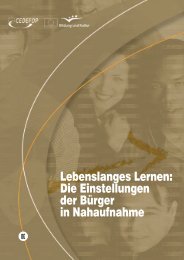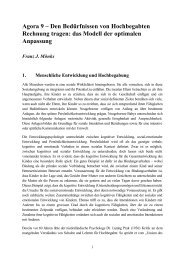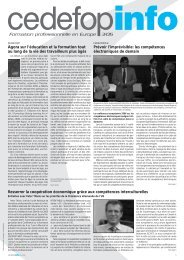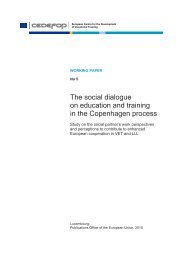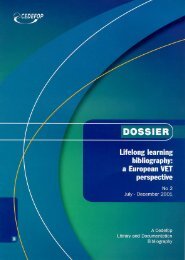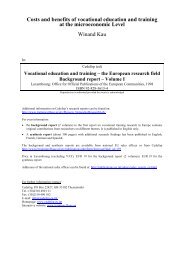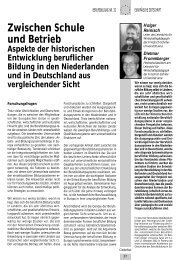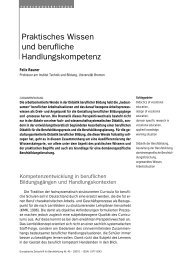Full text (pdf) - Cedefop - Europa
Full text (pdf) - Cedefop - Europa
Full text (pdf) - Cedefop - Europa
You also want an ePaper? Increase the reach of your titles
YUMPU automatically turns print PDFs into web optimized ePapers that Google loves.
186<br />
European journal of vocational training<br />
No 42/43 – 2007/3 2008/1<br />
fies its transfer to National Qualifications Frameworks (NQF) or other national<br />
systems.<br />
The purpose of both processes (Bologna and Copenhagen) is to ensure<br />
permeability, transparency and mobility in the education sector (Dunkel, 2007).<br />
Although the two processes are being coordinated, there is little congruence<br />
between them so far. This is particularly apparent when one considers the issue<br />
of progression between VET and higher education or the development<br />
of the European Qualifications Framework. What are the characteristic features<br />
of ECVET, ECTS and EQF, and how are these instruments coordinated<br />
with one another? To answer these questions, their objectives and functions<br />
are compared methodically in section 1. Section 2 then analyses their<br />
individual elements and components. Section 3 discusses the role and significance<br />
of credits, and a number of conclusions are drawn in the fourth and<br />
final section.<br />
Objectives and functions<br />
The objectives of EQF, ECVET and ECTS combine educational and socio-economic<br />
arguments, as illustrated by the following table. It is a matter<br />
both of promoting the competitiveness of Europe as a location (growth and<br />
employment are EU aims laid down by the Lisbon Strategy) and of fostering<br />
the personal and occupational development of individuals in Europe. ECTS<br />
was first devised in 1984 as an instrument for the recognition of short-term<br />
study visits within the ERASMUS programme (student mobility in Europe) and<br />
was subsequently taken up by the Bologna Declaration as an ‘instrumental<br />
objective’ at the initiative of the Ministries of Education. Only in 2002, in the<br />
con<strong>text</strong> of the Copenhagen Declaration, was ECVET advocated as an instrument<br />
for the recognition of competences and qualifications at the initiative of<br />
the Ministries responsible for VET and of the European Commission. Both ECTS<br />
and ECVET are European credit transfer and accumulation systems, one for<br />
the higher education sector and the other for VET. ECVET does not determine<br />
a credit system for qualifications at national or sectoral level; rather it<br />
serves as an international framework of reference. ECTS has, over the years,<br />
been incorporated into the higher education legislation and regulations of almost<br />
all the countries participating in the Bologna Process (European Commission,<br />
2006c). The EQF is a framework of reference intended, inter alia, to<br />
facilitate the allocation of similar qualifications or parts of qualifications at the<br />
appropriate level and consequently to ensure cooperation and comparabili-




